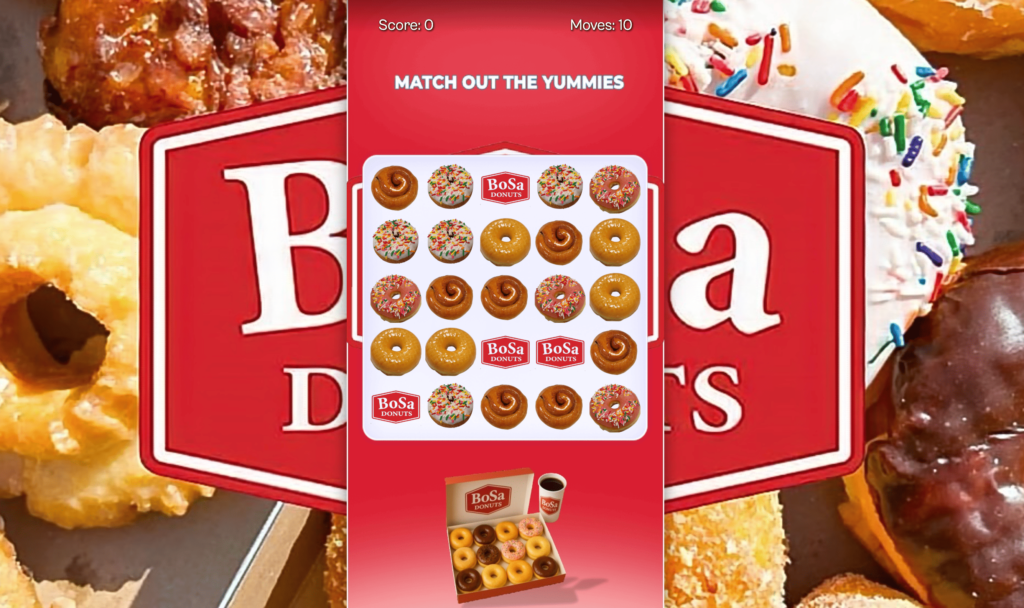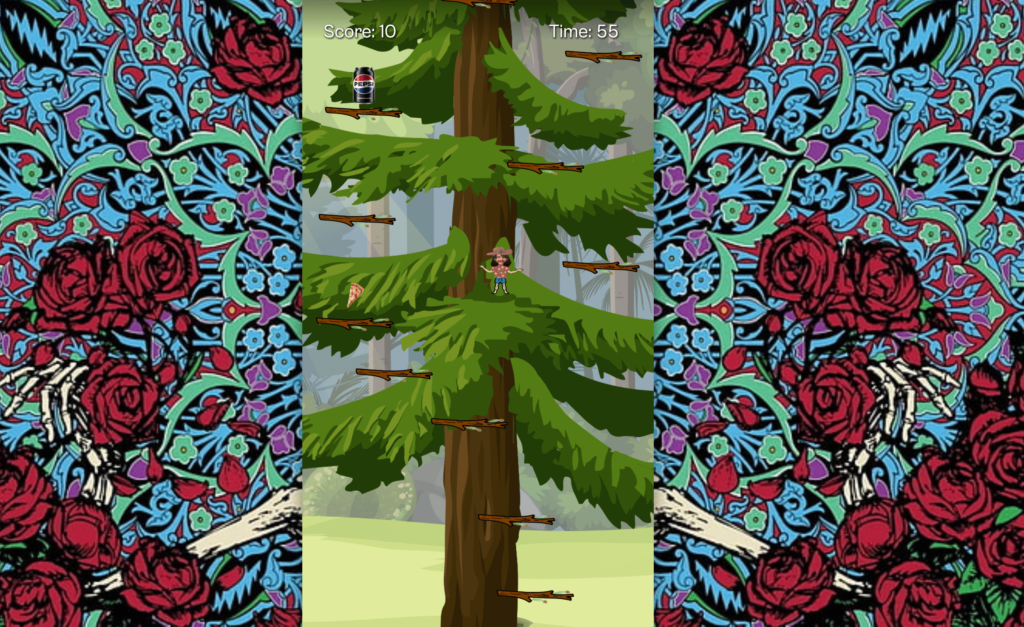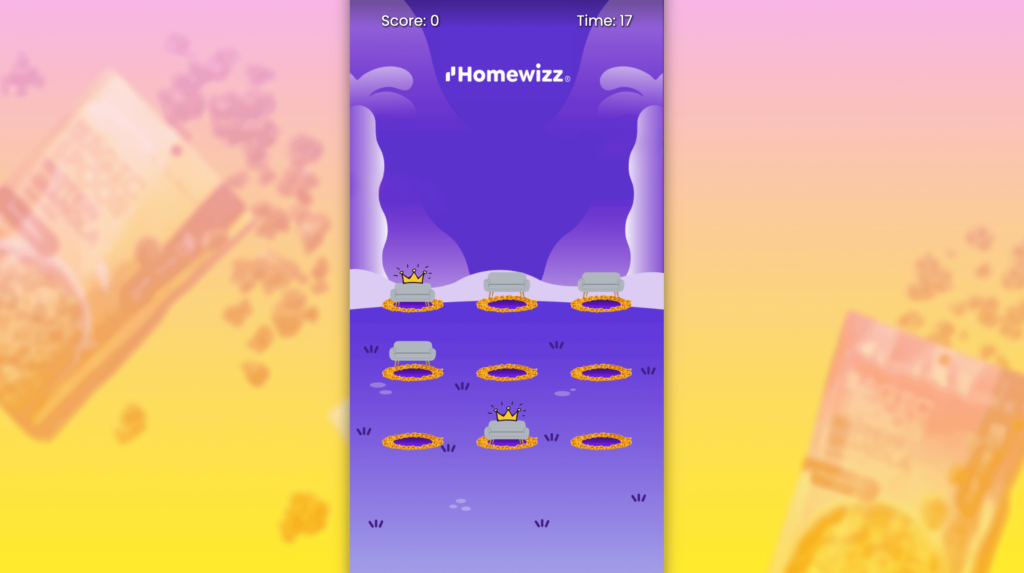Quick Summary
Discover how five different brands are using Playzo games to solve real business challenges. From BoSa Donuts driving foot traffic with a Match 3 game to furniture brands educating customers through Whack-a-Mole, these case studies show how gamification drives engagement, leads, and sales across industries.
Table of Contents
- BoSa Donuts – Match 3 Game
- ClientiSubito – Spin the Wheel Game
- Doodle Jump Style Game for Content Creator
- Whack-a-Mole Game for Furniture Brand
- Order-Fulfillment Game for Retail Brand
- Key Takeaways for Marketing or CRM Managers
- FAQs
- Related Articles
BoSa Donuts – Match 3 Game
The Challenge: How do you make a donut brand memorable in a crowded market while driving both online and offline traffic?
The Solution: A Match 3 game featuring their actual donut products. Players swap donuts to create matches, and the game drives them to either order online or visit stores through QR codes.
Why It Works: Match 3 mechanics are universally loved and easy to learn. When players see BoSa’s real donuts in the game, they naturally crave them. The QR code integration bridges the gap between digital engagement and physical sales.
Business Impact: Increased foot traffic to stores, higher online orders, and stronger brand recall through repeated gameplay.

ClientiSubito – Spin the Wheel Game
The Challenge: How do you capture customer data while making promotions feel exciting rather than pushy?
The Solution: A spin-the-wheel game where users enter their information before spinning to win prizes like cheesecakes, pizzas, and drinks.
Why It Works: The anticipation of spinning creates excitement that makes users willing to share their contact details. Each prize can be redeemed online or in-store, turning engagement into actual sales.
Business Impact: Built a customer database while driving sales through prize redemptions. The game feels like entertainment, not a sales pitch.

Doodle Jump Style Game for Content Creator
The Challenge: How do you keep visitors on your website longer while building a memorable brand personality?
The Solution: A vertical jumping game featuring a humorous character that players control. The goal is to jump as high as possible between platforms.
Why It Works: Simple, addictive gameplay keeps users engaged longer. The funny character shows the creator’s personality, building stronger audience connections. Players keep coming back to beat their high scores.
Business Impact: Increased time on site, stronger audience relationships, and more opportunities to monetize content through longer engagement.

Whack-a-Mole Game for Furniture Brand
The Challenge: How do you make furniture shopping fun and engaging while educating customers about your products?
The Solution: A classic whack-a-mole game where furniture items pop up randomly. Players click quickly to “whack” them, learning about products while having fun.
Why It Works: Fast-paced gameplay keeps users hooked and competitive. The furniture education happens naturally through gameplay, making it feel less like a sales pitch and more like entertainment.
Business Impact: Increased brand awareness, product education, and social sharing as players compete for high scores.

Order-Fulfillment Game for Retail Brand
The Challenge: How do you create engagement that directly connects to your core business model?
The Solution: A game where players fulfill orders quickly within time limits, mirroring the brand’s actual ordering process.
Why It Works: The game mechanics directly relate to the brand’s business, making it feel authentic and relevant. Time pressure creates excitement and urgency that mirrors real ordering experiences.
Business Impact: Stronger brand connection, increased engagement, and direct correlation between gameplay and real business activities.

Key Takeaways for Brand, CRM Managers
- Think Beyond Entertainment: Every game should serve a specific business goal – whether it’s lead generation, brand education, or driving sales.
- Bridge Digital and Physical: Use QR codes and offline integration to turn digital engagement into real business results.
- Make It Relevant: Choose game mechanics that connect to your actual business model or products.
- Focus on Data: Use games to capture customer information and build your database while providing value.
- Keep It Simple: Complex games can overwhelm users. Simple, addictive mechanics often perform better.
Ready to create your own business-driving game? Try Playzo today and see how easy it is to turn engagement into results.
FAQs
How long does it take to create a Playzo game?
With Playzo’s no-code platform, you can create a professional game in just minutes. The intuitive interface makes it easy to customize games for your brand and launch them quickly.
Can I use Playzo games for any industry?
Absolutely! Playzo games are versatile and can be adapted for any industry or business goal. From retail to education to content creation, the possibilities are endless.
Do I need technical skills to use Playzo?
No technical skills required! Playzo is designed to be user-friendly, allowing anyone to create engaging games without coding knowledge.
How do Playzo games improve business results?
Interactive games capture attention, provide value, and create memorable experiences. They encourage participation, collect customer data, and keep customers coming back for more content.
Can I integrate Playzo games with my existing marketing tools?
Yes! Playzo games can be embedded on websites, shared via social media, and integrated with your existing marketing campaigns and analytics tools.